At Skedaddle Humane Wildlife Control, as the name suggests, we place great value on using humane measures to evict animals from our customers’ homes. We pride ourselves on limiting the stress of removal on the homeowner AND the animals.
We use safe infrared technology (FLIR) to see signs of wildlife activity in difficult to access places in home including, walls and in attics. Thermal-imaging cameras allow us to show homeowners damage to insulation caused by wildlife infestation. Homeowners are able to see the difference in temperature of different surfaces inside an attic using colours.
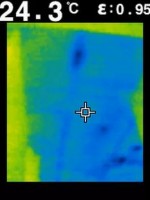
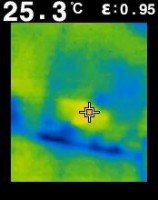
The photo on the left is of a ceiling and shows the temperature difference between the cold ceiling in blue due to damaged insulation, and the warm interior wall on the extreme left of the photo. The second photo shows the body heat of a raccoon sleeping in the attic above.
The infrared camera enables us to see where wild animals are situated behind walls by sensing their body heat. Once we locate one or two thermal spots we know that’s the exact location of the animal. Having this important information on hand really helps speed along the removal process and ensures no animals are injured during the process. This is especially beneficial during wildlife baby seasons.
Very often it is necessary to cut through drywall to remove babies. Pinpointing their exact location removes the guess work and that saves you the homeowner time and money in repair costs. By utilizing infrared technology, we are able to minimize the stress on wildlife and homeowners, and minimize damage while searching for critters in hard to reach places.
This tool not only points out the radiant body heat of squirrels but also just about every other species that we remove can be found by using this technology. It’s a great advantage to everyone involved, especially the animals.
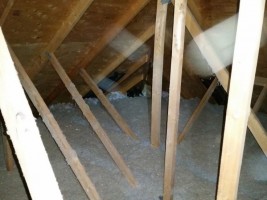
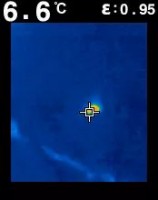
The images above shows a thermal image of a raccoon in an attic. Notice the roof and ceiling are the exact same temperature because of a uniform blanket of R50 cellulose insulation.
Environment Canada recommends attics be insulated to R50. This is around 18.5 – 23.5 inches depending on the insulation type. R value is a measure of thermal resistance, the higher the value the more effective the insulation is at preventing heat loss.
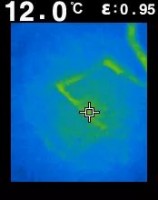
This photo shows an attic hatch without weather stripping.
The difference in color, reflects temperature, and illustrates the importance of making sure all areas of the attic are properly insulated.
Adding insulation to your attic and making the attic hatch airtight with weather stripping can reduce your year round energy use by 20 to 60 percent, saving you hundreds of dollars per year.
Homes built prior to 1985 likely need to have their insulation upgraded, as these homes don’t have the same air tightness that today’s building codes call for. Many homes also suffer insulation damage and loss due to wildlife activity in the attic.
Of all the places to apply more insulation in a home, attics usually offer the best payoff for your dollar.
If your home’s insulation has been damaged by wildlife, the safest course of action might include removing and replacing your insulation. Call Skedaddle Humane Wildlife Control today to learn more about what we can do for you. 1-877-222-9453
Proudly Serving: Ottawa, Montreal, Halifax, Hamilton, Burlington, Oakville, Mississauga, Brampton, Kitchener-Waterloo, Guelph, Cambridge and the Niagara Region


